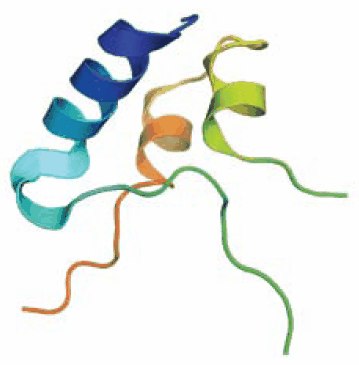Insulin-like Growth Factors (IGF)
Insulin-like growth factors (IGF-I and IGF-II) are mitogenic and anabolic peptides structurally homologous to insulin. IGF-I and -II are single polypeptide chains of approximately 7.5 kDa comprised of 70 and 67 amino acid residues, respectively. IGF-I and -II share 70% homology in amino acid sequence, while IGF-I and proinsulin share 48% homology. Both IGFs are highly conserved between species, with 100% identity among human, bovine and porcine IGFs. Unlike insulin, IGF-I and -II are primarily involved in normal growth and development. Circulating IGF is mainly secreted from the liver and acts as an endocrine to distant cells.
Many other tissues also make IGFs, where they act with autocrine and paracrine functions to regulate a number of different cellular functions. IGF-I receptor (IGF-IR) is homologous to the insulin receptor (IR) and is comprised of two 130-kDa ligand-binding a-subunits and two 95-kDa transmembrane b-subunits. IGF-IR binds IGF-I with highest affinity, IGF-II with somewhat lower affinity, and insulin with rather weak affinity. IGF-IR is a tyrosine kinase receptor with signal transduction pathways that include substrates IRS-1, IRS-2, Shc, and Grb10. IGF-IIR has anabolic functions (like IR) but also shows three distinguishing qualities concerned with growth: 1) It signals mitosis in a variety of cells. 2) It is a necessary factor in establishing and maintaining cells in a transformed phenotype. 3) It protects cells from apoptosis, both in vitro and in vivo. This last quality is the subject of considerable interest, as it was found that IGF-I administration to cells stimulates the formation of bcl-2, a prominent anti-apoptotic intracellular messenger. While other known anti-apoptosis treatments inhibit apoptotic pathways without actually preventing cell death, IGF-I stimulation may actually decrease the probability of apoptosis initiation.

IGF-I also known as somatomedin C, is secreted from the liver into circulation in a process regulated by pituitary growth hormone (GH) and so it mediates the growthpromoting activity of GH.
References
Per continuare a leggere, autenticati o crea un account.
Non hai un Account?